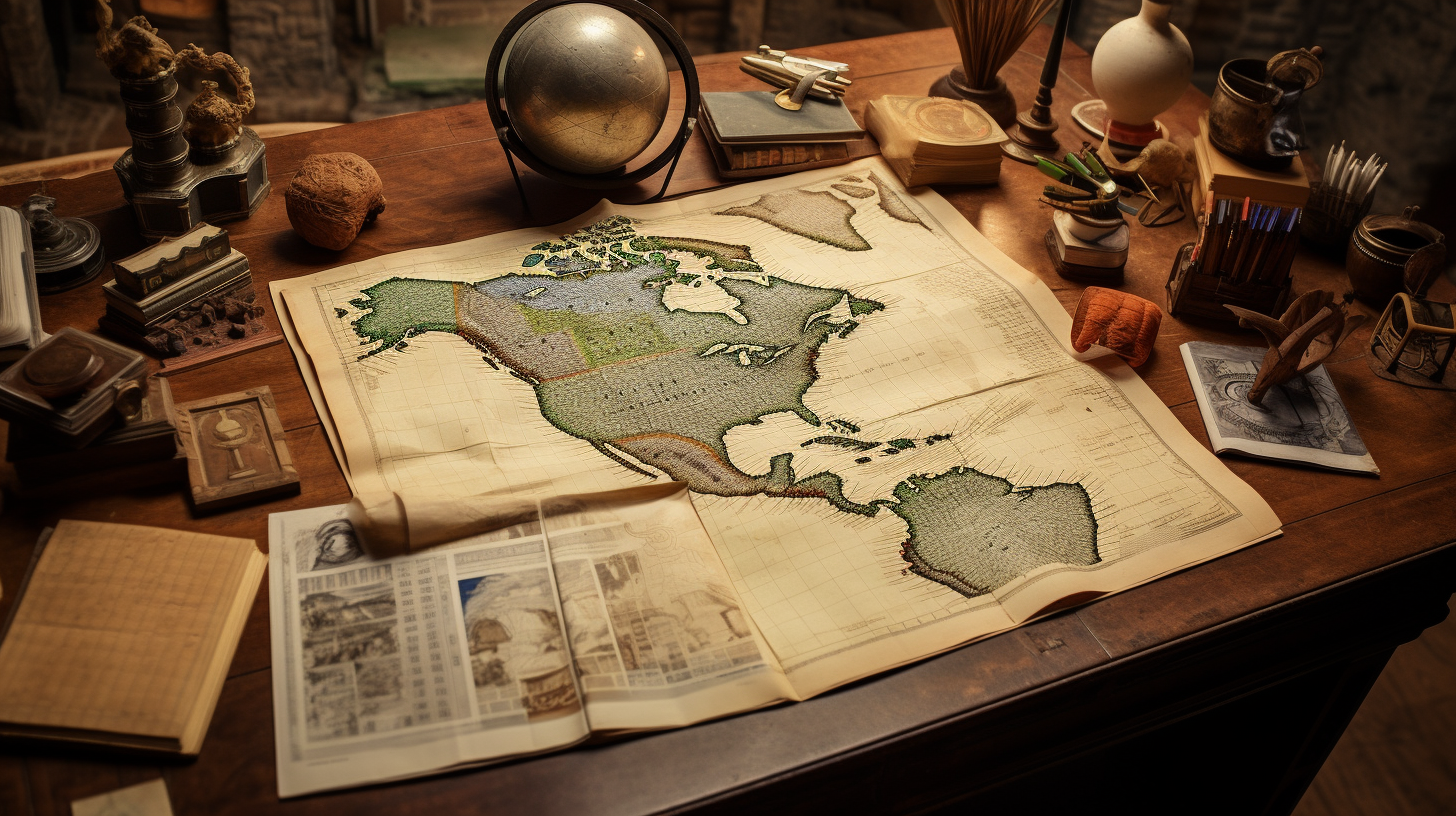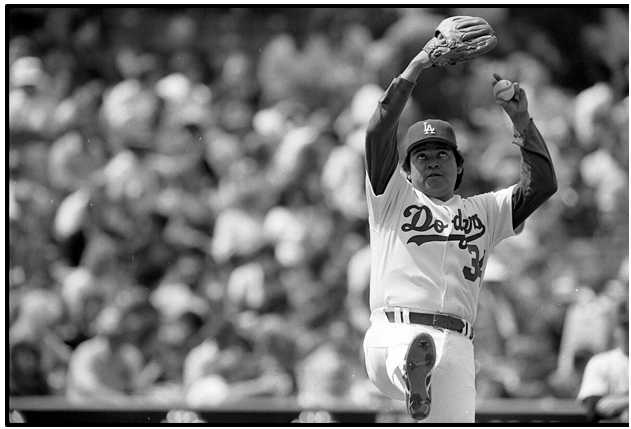
Articles

Mexican States
Southwest United States
Heritage and Governance
How Fernando Valenzuela Was Destined to Be a Hall of Famer!
If there was ever an ironic baseball player that took over the sport, Fernando Valenzuela is one of those players. Veteran Baseball Fans recall an unknown player from Mexico taking over Major league Baseball by storm, becoming a household name during the 1981 MLB season. His performance dazzled fans as he started the season with a shutout opening day at Dodger stadium. He would go on to having one of the greatest rookie seasons ever, creating buzz throughout the league that would be known as Fernandomania.
The Indigenous People of California: Past and Present
Explore the untold story of California’s Indigenous peoples - from ancient languages and tribal lands to colonization, resistance, and survival. This detailed report follows their journey across centuries of upheaval and resilience.
The Santa Ynez Mission Indians: Their Struggle for Land
This article explores the origins, languages, and history of the Chumash people, with special attention to the Santa Ynez Mission. We take you through the Mission years, the Secularization, and the subsequent dispute in which the Catholic Church saw the natives as squatters who needed to be evicted from church land [i.e., the Church Lawsuit from 1897 to 1906]. Today, the Santa Ynez Band of Chumash Indians is a federally recognized Native American tribe that has witnessed great success in recent decades, a remarkable transition from the 1890s and Early Twentieth Century.
Early Orange County History
Before the land was parceled into cities, ranchos, and suburbs, what we now call Orange County, California was home to Indigenous nations whose presence stretched back thousands of years. The Tongva (often called Gabrieleño), the Juaneño (Acjachemen), and the Luiseño each held territory here. We trace the region’s transformation from Indigenous homelands to Spanish mission territory and, later, to Mexican ranchos. We examine the impact of colonization, beginning with the 1769 expeditions and the establishment of the mission system.
Nine Generations of Californians: Serving Under Three Flags
Juan Matias Olivas came as a soldier to California in the Expedition of 1781. Juan’s generation was the first of nine generations to serve as military men in California. This article discusses the service of fourteen members of this family. Three of these individuals died while in the service (two of them were killed in action). We tell their story and pay tribute to their service to the people of California. From 1781 to 1985, the flags, the causes, and the surnames changed, but the Olivas family's legacy of military service to California has endured.
The Expedition of 1781
This presentation explores the historic “Expedition of 1781” which led to the eventual Spanish settlement of Los Angeles, Santa Barbara and San Buenaventura. Discover the challenges faced by the soldiers and settlers of that expedition and their role in shaping Southern California's early development. Today’s sprawling metropolis of Los Angeles and its surrounding regions is the result of the Expedition of 1781.
Searching for Your Indigenous California Ancestors
There are many methods of exploring your Indigenous California Roots. These include the California Mission Indians Records (Baptisms, Marriages & Burials) and the Huntington Library’s California Early Population Project. But the National Archives (NARA) can also be very helpful. It is also important for people to know that Ancestry.com has a database for all the Indian Censuses between 1885 and 1940. Finding that your ancestors were listed in this census could help you locate more information.
The Indians of Southern California’s Interior
“The Indians of Southern California’s Interior” will explore the Native American people that inhabited Southern California’s mountains and deserts. While the Spanish mission system dominated the coastal area, the interior of California was settled more slowly and the conquest of these inland Indians took more time. Today, nearly three dozen Indian reservations lie within this area. The region from San Diego to San Bernardino counties will be discussed.
Santa Barbara and Ventura During the Spanish Period (1783-1821)
More missions were established among the Chumash than among any other Native American group in California. Five missions were founded in Chumash territory: San Luis Obispo (1772), San Buenaventura (1782), Santa Bárbara (1786), La Purísima Concepción (1787) and Santa Ynez (1804). The Indians of this area were described by the Spaniards as gentle, hospitable to strangers, lively, industrious, skillful and clever.
The Diversity of the Chumash People
This presentation explores the Chumash tribes that inhabited the coastal region of the Santa Barbara area when the Spaniards arrived there in 1769. Speaking eight distinct languages – most of which were mutually unintelligible – the Chumash lived and thrived in an area where five Catholic missions were founded between 1772 and 1804. Their history, customs and present status with regards to federal recognition will be explored.
Searching the Early California Population Project (ECPP) Database
This presentation will discuss the ECPP database, with suggestions on how to use it. To the beginner, this database -- with dozens of search fields -- seems challenging and confusing, but John Schmal will describe how to use it effectively, and after that will do selected searches to show examples of baptism and marriage documents of California Mission Indians and of Mexican soldiers and their families.
Divided Loyalties: The Indigenous Peoples Who Occupy the US-Mexico Borderlands
This presentation discusses the native groups that occupied the regions adjacent to and on both sides of the U.S.-Mexico border over the last three centuries. While some of these tribes are well-known to us today (i.e., the Yaquis, Tohono O'odham, Kumeyaay, etc.), tribal groups that have nearly disappeared as distinguishable cultural entities (i.e., Carrizos, Mansos, Jocome, Coahuiltecans, etc.) will also be discussed. In addition to the history of those tribes, we will explore the current status of some of the tribal communities that still exist today.
Hispanics and Indigenous People in the San Fernando Valley of California
This presentation explores the original settlement of the Los Angeles Basin and the San Fernando Valley, including the Expedition of 1781 and the establishment of the San Gabriel Mission (1771) and the San Fernando Mission (1797). The lecture also includes a discussion of the original indigenous inhabitants who lived near the Spanish missions. The presentation will discuss how the San Fernando evolved through occupation by three powers (Spain, Mexico and the U.S.).
Southern California’s Native American Tribes
This presentation explores the Native American people that inhabited Southern California in the 18th Century. The region from San Diego to Santa Barbara will be discussed. The current status of these tribes in the present day will also be discussed.
The First Families of Los Angeles
Has your family lived in Los Angeles for many generations? Do you have any of the following surnames: Verdugo, Sepulveda, Avila, Rosas, Higuera, Lugo, Domínguez, Serrano, Olivas, Ybarra, Palomares, Rodríguez, Reyes, Romero, Valenzuela, Pico or Feliz? Or did you or your family come from the states of Sinaloa or Sonora?
The Féliz Family: Pioneers of Los Angeles
The raw materials of Spain’s settlement of California were Mexican soldiers. These soldiers were men who left behind their parents and siblings in Sinaloa and Sonora to serve on the northern outskirts of Spain’s empire during the 1770s and 1780s. One family that contributed several soldiers to Spain’s colonial effort was the Féliz family of Álamos, Sonora.
Early Southern California History (1769-1800)
This presentation explores the original Spanish settlement of Southern California in the late 18th Century, as well as the large number of indigenous communities that existed in the area. Of special interest will be the Expedition of 1781 from Álamos, Sonora, which led to the establishment of Los Angeles, San Buenaventura and Santa Barbara.
The Native Roots of Southern Californians
On September 4, 1781, 44 pobladores (settlers) arrived at a location 9 miles west of the San Gabriel Mission to establish California’s second pueblo: El Pueblo de Nuestro Señora la Reina de Los Angles del Río de Porciúncula or The Town of Our Lady the Queen of Angeles by the River of Porciúncula. Later, the name was shortened to Los Angeles. When the 44 settlers arrived in Los Angeles, they and their families settled a short distance from a Kizh Nation village called Yang-na (now referred to as Yaanga) — now near the intersection of Alameda and Commercial Streets (south of the 101) — where 300 natives already lived.
Ritchie Valens: Pioneer Son of California
In July and August of 1781, two separate legs of an expedition arrived at the San Gabriel Mission with the intention of establishing a new Spanish settlement called “El Pueblo de Nuestra Señora de Los Angeles,” nine miles west of the mission. After a journey of 950 miles from Álamos (Sonora) through hostile Indian territory, fifty-six soldiers and eleven settlers (pobladores) and their families had arrived in San Gabriel and among their ranks were:
The Expedition of 1781: The Founding of Los Angeles
Most people living in Los Angeles today have probably never heard of the Expedition of 1781. However, if this expedition had not taken place or fulfilled its objectives, Los Angeles would not have turned 238 years old in September 2019. This expedition of almost a thousand miles founded a small pueblo on the outskirts of the extensive Spanish Empire. That small pueblo, now known as Los Angeles, would eventually form the nucleus of a thriving multi-ethnic, multicultural urban center with a population of almost 10 million people.

Article Categories
- Aguascalientes 14
- Arizona 4
- Baja California 5
- Baja California Sur 2
- California 20
- Campeche 4
- Census 36
- Chiapas 3
- Chihuahua 11
- Coahuila 7
- Colima 1
- Conquistador Chronicles 2
- Durango 2
- Ethnic Identity 41
- Genealogy 35
- Guanajuato 8
- Guerrero 8
- Hidalgo 2
- Indigenous Insights 98
- Jalisco 25
- Mexico City 11
- Michoacan 7
- Morelos 4
- Nayarit 3
- New Mexico 4
- Nuevo Leon 7
- Oaxaca 6
- Politics 10
- Puebla 5
- Queretaro 1
- Quintana Roo 4
- San Luis Potosi 11
- Sinaloa 6
- Sonora 16
- Southwest US 26
- State of Mexico 5
- Tabasco 3
- Tamaulipas 11
- Texas 7
- Tlaxcala 7
- Veracruz 6
- Yucatan 6
- Zacatecas 13





















